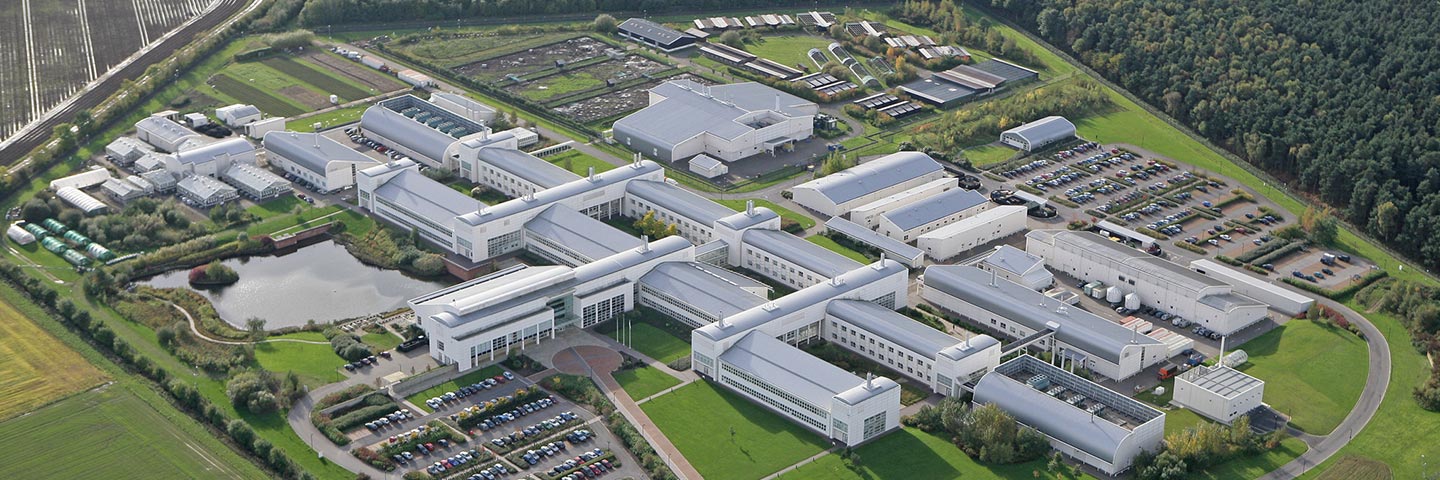The bioeconomy in the North of England stands on the cusp of significant expansion and one of the science parks which is ready to play its part is the National Agri-Food Innovation Campus (NAFIC).
Situated at Sand Hutton, a few miles north of the historic city of York, NAFIC sits in 80 acres of parkland and has 380,000 sqft of built space, with a range of options for organisations seeking to operate within a stimulating scientific environment.
Offering an alternative to science parks in London, Cheshire, Nottingham, Oxford and Cambridge, the site is home to sixteen science-based organisations, four of them Government-backed and twelve from the private sector.
The attraction for all of them is that the campus offers not only secure and quality accommodation and associated support services to the standard required for 'regulatory science', but also an atmosphere cultivated for thriving cross-disciplinary interaction with world-class scientists and businesses across all points of the life science spectrum.
It also houses the 250-seat Lakeside Conference Centre, an on-site restaurant, nursery and gym, adding to the attraction for its tenants.
CEO of anchor tenant Fera Science Ltd, Dr Andrew Swift said: "One of the big attractions is NAFIC's location.
"City centre campuses present too many distractions, costly commutes, difficult parking and expansion possibilities. By contrast, at NAFIC we are situated in attractive and peaceful countryside, which creates an environment that is good for focus and original thinking.
"NAFIC creates an atmosphere which fosters ingenuity and ground-breaking science
"This is not a university campus. It's a space that is used by commercial organisations and so commercial confidentiality is vital, however, the assorted events, gatherings and 'community' that NAFIC establishes encourages scientists to 'bump in to each other' from which inventive relationships are built and great ideas are born."
The success of t e approach taken by the team at NAFIC is plain to see, with 87 per cent occupancy and opportunities to further develop its available space, including for pilot and demonstrator plants.
Eight hundred people are employed on the site and in the past 12 months, three of its smallest SM Es have all doubled in size and space.
Such growth fits well with the recently published Science and Innovation Audit Report: The Bioeconomy in the North of England, commissioned by the Department for Business, Energy, Industry and Skills (BEIS) as part of the research in to Britain's Industrial Strategy and published by the University of York.
The report identified the potential to double the size of the bioeconomy in the North of England in GVA terms from £12.5 billion now to £25 billion in 2030.
OPPORTUNITIES IDENTIFIED IN THE REPORT INCLUDE:
- Making the transition in the chemicals industry to become significantly bio- based
- Academic collaborations with major global companies and encouraging more large companies to pursue open innovation
- Supporting disruptive innovators to thrive in the region and bring new products and services to market
- Supporting food and feed processing industries to establish competitive advantage in bioeconomy products.
Andrew added: "I am confident that the life sciences sector in the north of England can grow in the years to come.
If you look at the food industry as an example, we have a corridor stretching from fishing ports at Grimsby to Liverpool in which can be found a wide range of companies, everything from food processors and canneries to game producers.
"The potential for growth is there and not just in the food sector. Life sciences covers a wide range of areas and we are working to support organisations large and small to develop their ideas.
"NAFIC deals in knowledge and its transfer; a great example of this is an innovation voucher scheme called: Stimulating Innovation in the Agri-Food Sector (S IAFS) which Fera offers in cooperation with Make it York, the organisation responsible for developing business growth in the city.
"Life sciences is not just about the big names. Very often when a big company announces a new development, it started with work done by a small organisation and the campus serves both."
Among large organisations with which SMEs can work on the campus are a number of nationally important centres which have created their headquarters at Sand Hutton.
This includes The Centre for Crop Health and Protection (CHAP) - a £2 1.3 million government funded investment to revolutionise how farmers manage crop threats including pests and diseases.
The Centre's consortium partners include Bayer CropScience, Frontier Agriculture, Tesco, Stockbridge Technology Centre, ADHB, CABI, Cranfield University, Fera, Newcastle and Cranfield Universities and Rothamsted Research.
CHAP enables these organisations to work together to tackle the Government's 'Grand Challenges' which confront UK agri -food industry in order to raise its productivity and international competitiveness.
Andrew is confident that the campus will continue to grow by attracting more organisations who seek to innovate in a secure, creative and knowledge-rich environment.
He said: "NAFIC has proved itself very popular and the past year has been a strong one, with a lot of interest in what it can offer, including its latest concept in supporting transient or interim research and development needs via a 'Research Hotel' model.
"NAFIC is not just looking for large companies. It welcomes and works well with smaller businesses and those seeking incubation."




